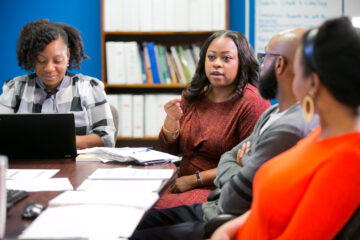Teacher Supply and Demand
 New Zealand, Japan and Singapore are all considering policies to better match teacher demand with supply. A new study from the New Zealand Ministry of Education shows that teaching jobs remain hard to come by for the hundreds of recent graduates from teacher education programs. Some teaching positions can attract as many as 100 applications each week, prompting some teachers to apply for jobs overseas. The 2013 Monitoring Teacher Supply report, released on October 1st, found that available vacancies for primary teachers have risen since 2010, but not yet reached the higher 2006-2009 levels. Teacher supply, on the other hand, has remained strong, in part because the number leaving the profession remains flat after falling to a ten-year low in 2010-11, according to the Ministry of Education. The Ministry insists that the situation has improved and will further improve as population growth increases the need for more teachers. In the meantime, the Ministry has moved to reduce the number of overseas teachers in New Zealand. The University of Auckland’s dean of education, Graeme Aitken, said at least 70 percent of the graduates from last year’s Graduate Diploma in Teaching who looked for jobs were now teaching. Read more at The New Zealand Herald.
New Zealand, Japan and Singapore are all considering policies to better match teacher demand with supply. A new study from the New Zealand Ministry of Education shows that teaching jobs remain hard to come by for the hundreds of recent graduates from teacher education programs. Some teaching positions can attract as many as 100 applications each week, prompting some teachers to apply for jobs overseas. The 2013 Monitoring Teacher Supply report, released on October 1st, found that available vacancies for primary teachers have risen since 2010, but not yet reached the higher 2006-2009 levels. Teacher supply, on the other hand, has remained strong, in part because the number leaving the profession remains flat after falling to a ten-year low in 2010-11, according to the Ministry of Education. The Ministry insists that the situation has improved and will further improve as population growth increases the need for more teachers. In the meantime, the Ministry has moved to reduce the number of overseas teachers in New Zealand. The University of Auckland’s dean of education, Graeme Aitken, said at least 70 percent of the graduates from last year’s Graduate Diploma in Teaching who looked for jobs were now teaching. Read more at The New Zealand Herald.
In Japan, in order to substantially cut state funding for compulsory education in fiscal 2014, members of an advisory panel to the finance minister have called on the government to slash the number of elementary and junior high school teachers. The panel agreed that reducing the number of teachers is “unavoidable in line with drops in the number of schoolchildren amid the falling birthrate.” The Finance Ministry estimated that the budget for salaries and benefits for public school teachers can be reduced by about ¥37 billion (USD $377 million ) in fiscal 2014 starting next April, if the number of teachers is cut by 2,000 and salaries are lowered to the levels of local government employees, according to the Japan Times.
Meanwhile, the Singapore Ministry of Education has been recruiting and training about 2,500 new teachers per year over the past decade. Rather than using the recent increases in newly trained teachers to reduce class size for all students, the Ministry is dedicated to adopting a needs-based system for resourcing – meaning more teachers will be moved to programs for slower learners. Currently, the ratio is one teacher for every 18 students in primary schools and one teacher for every 14 students in secondary schools, which is comparable to the OECD average.
Comparing Teacher Training Across Countries
A few commentaries this past month draw attention to the substantial differences in teacher training programs across top-performing countries. In an interview with The Tyee, an American teacher discusses his first-hand experience with how Finnish schools achieve better results. After four years of teaching in the Boston area, Tim Walker is now teaching 5th grade English in Helsinki, Finland. The contrast between his experience in the American school system and the Finnish one is glaring. Walker explains that differences are both with how the students learn and how the teachers work together. He says the kids in his Finnish class are more independent than their American counterparts. “The widespread independence of the children is dramatically changing the way that I approach these first days of school,” Walker claims. He also notes that the teachers in his Helsinki school are much more relaxed and have more time to work together than the teachers in Boston. “I’m trying to adjust to a system where I’m not trying to fill in every hour of the school day,” he said. “I teach a few hours, but I’m also expected to work with my colleagues, do my lesson plans and also curriculum planning.” Walker also reports that his work with the rest of the staff is more collaborative and less critical than it would be in the States. He notes that in a recent meeting with the principal and other leaders at his school, the purpose was not to put him on the spot, but to offer constructive, collaborative help. Walker also says that teachers in the Finnish school are treated as trusted professionals, not just because they have excellent training, but also because they are able to collaborate and draw on each others’ experience to improve their teaching skills.
And lastly, in the New York Times, columnist Thomas Friedman writes about Shanghai’s strategies to improve teaching and learning including a deep commitment to teacher training, peer-to-peer learning and constant professional development, deep involvement of parents in their children’s learning and an insistence by school leadership on the highest standards that prioritizes education and respects teachers.
Ensuring Equity for All Learners
 Policies focused on ensuring equity for all types of learners are being hotly debated across Hong Kong, Ontario, Shanghai and Japan. The United Nations Committee on the Rights of the Child is concerned that Hong Kong does not have strong enough education policies to integrate ethnic minorities into mainstream schools. Most non-Chinese speaking students are currently assigned to designated schools for ethnic minorities, where Chinese as a second language is not emphasized and most graduates are not prepared to enter post-secondary education or find jobs after graduation. The UN committee has urged the Hong Kong government to abolish the separationist policy and replace it with something that would ensure children of ethnic minorities receive quality education in Chinese as a second language. Read more at The Hong Kong Standard.
Policies focused on ensuring equity for all types of learners are being hotly debated across Hong Kong, Ontario, Shanghai and Japan. The United Nations Committee on the Rights of the Child is concerned that Hong Kong does not have strong enough education policies to integrate ethnic minorities into mainstream schools. Most non-Chinese speaking students are currently assigned to designated schools for ethnic minorities, where Chinese as a second language is not emphasized and most graduates are not prepared to enter post-secondary education or find jobs after graduation. The UN committee has urged the Hong Kong government to abolish the separationist policy and replace it with something that would ensure children of ethnic minorities receive quality education in Chinese as a second language. Read more at The Hong Kong Standard.
A new report shows aboriginal students in Ontario public schools lag far behind other students on standardized tests. The advocacy group, People for Education, that produced the report suggests that this raises questions about the federal government’s strategy to require on-reserve schools to comply with provincial academic standards. The on-reserve schools are the responsibility of the federal government which is now considering the First National Education Act which would enforce standards on the on-reserve schools and require the federal government to take over ones that fail to meet them. About 80 percent of aboriginal students attend public schools, while 20 percent attend on-reserve schools. The aboriginal students in Ontario schools score more than 20 points below the province average on reading and mathematics exams. Annie Kidder, executive director of People for Education, suggests that the Ontario schools are not providing cultural enrichment and other supports needed for the aboriginal students to succeed. While lessons on aboriginal history are part of the curriculum, these lessons are now optional which, according to the report, means they are often left out. The report also suggests that few teachers receive professional development in aboriginal issues and that it is not part of their curriculum at teachers colleges. Liz Sandals, Education Minister, responded having all students learn about aboriginal history “is the way we need to go” and that the lack of attention to aboriginal issues in teacher education programs will be addressed as the province extends teacher education programs from one year to two. Read more at CTV News.
The Shanghai Education Commission recently announced it plans to offer personalized education to children with disabilities who receive medical care at all 58 public special schools and teaching sites citywide. Currently, only special schools in 10 of the 17 districts are included in a program where teachers and doctors work together to design a unique curriculum for each child based on their needs. Schools in this program are also assigned a community doctor who pays regular visits and offers help to the teachers and children who receive hospital check-ups, which are more comprehensive than those usually done in schools. Shanghai has 9,000 registered disabled students with conditions including blindness, deafness, autism, learning difficulties and Down’s syndrome. Read the full story in Shanghai Daily.
Checker Finn of the Fordham Institute writes about Japan’s education policy proposal to impose tuition charges for public high school attendance by children from wealthy families, defined as an annual income of about $92,000 or more, and to use the proceeds from that tuition charge to subsidize the attendance of low-income children in private schools. The proposal, which would reportedly affect some 800,000 high school students, is already being criticized as violating the Japanese belief in free, universal education. Finn writes, “In U.S. terms, it blends the liberal idea of income redistribution with the conservative idea of helping poor kids choose private education.” Read the full commentary here.
Studies of Interest
A number of education benchmarking studies were published last month including a NAEP/TIMMS linking study from the National Center for Education Statistics (NCES), an agency within the U.S. Department of Education (click here to see Marc Tucker’s take on this analysis), the Programme for the International Assessment of Adult Competencies (PIACC) Survey of Adult Skills and a survey on teachers’ status from countries around the world.
 The National Center for Education Statistics released a report finding that eighth-graders in 36 states performed above the international mathematics and science averages on the 2011 Trends in International Mathematics and Science Study (TIMMS). However, the study also shows that even in top-performing states (including Massachusetts, Vermont and Minnesota) fewer students scored at the highest levels than students in several East Asian countries. The study predicted 8th grade students performance on the 2011 TIMMS mathematics and science test in the 43 U.S. states that did not participate in the 2011 TIMMS based on their performance on the 2011 National Assessment of Educational Progress (NAEP). David Driscoll, chairman of the National Assessment Governing Board, is quoted in the New York Times as saying, “It’s better news than we’re used to, but it’s still not anything to allow us to rest on our laurels.”
The National Center for Education Statistics released a report finding that eighth-graders in 36 states performed above the international mathematics and science averages on the 2011 Trends in International Mathematics and Science Study (TIMMS). However, the study also shows that even in top-performing states (including Massachusetts, Vermont and Minnesota) fewer students scored at the highest levels than students in several East Asian countries. The study predicted 8th grade students performance on the 2011 TIMMS mathematics and science test in the 43 U.S. states that did not participate in the 2011 TIMMS based on their performance on the 2011 National Assessment of Educational Progress (NAEP). David Driscoll, chairman of the National Assessment Governing Board, is quoted in the New York Times as saying, “It’s better news than we’re used to, but it’s still not anything to allow us to rest on our laurels.”
On October 8th, the OECD released its survey Skills Outlook 2013: First Results from the Survey of Adult Skills (2013). The survey looks at adults ages 16-65 and focuses on how adults develop literacy and numeracy skills, how they use those skills and what benefits they gain from them. The top countries in literacy skills are Japan, Finland and the Netherlands. The top three countries in numeracy skills are Japan, Finland and Sweden for numeracy and Australia for literacy. The survey also found that adults in the United States do not measure up well on literacy and numeracy skills and the ability to solve problems in technology rich environments. The new survey ranks the United States 16th of 24 countries in adult literacy, 21st of 24 countries in adult numeracy and 14th of 24 countries in problem solving. For further analysis from the Center on International Education Benchmarking, click here to read the Statistic of the Month [INSERT LINK ONCE LIVE].
Do teachers in China enjoy the highest level of public respect in the world? According to a new report from the Varkey Gem Foundation, a London-based nonprofit, Chinese teachers do in fact rate highest and the United States ranks ninth, beating out Finland. That seems implausible to Art Levine, the president of the Woodrow Wilson National Fellowship Foundation in the United States, who has called for a review of the methodology used in the report. The index is based on surveys comparing teaching to other professions and how much respect the public says teachers get from students.




